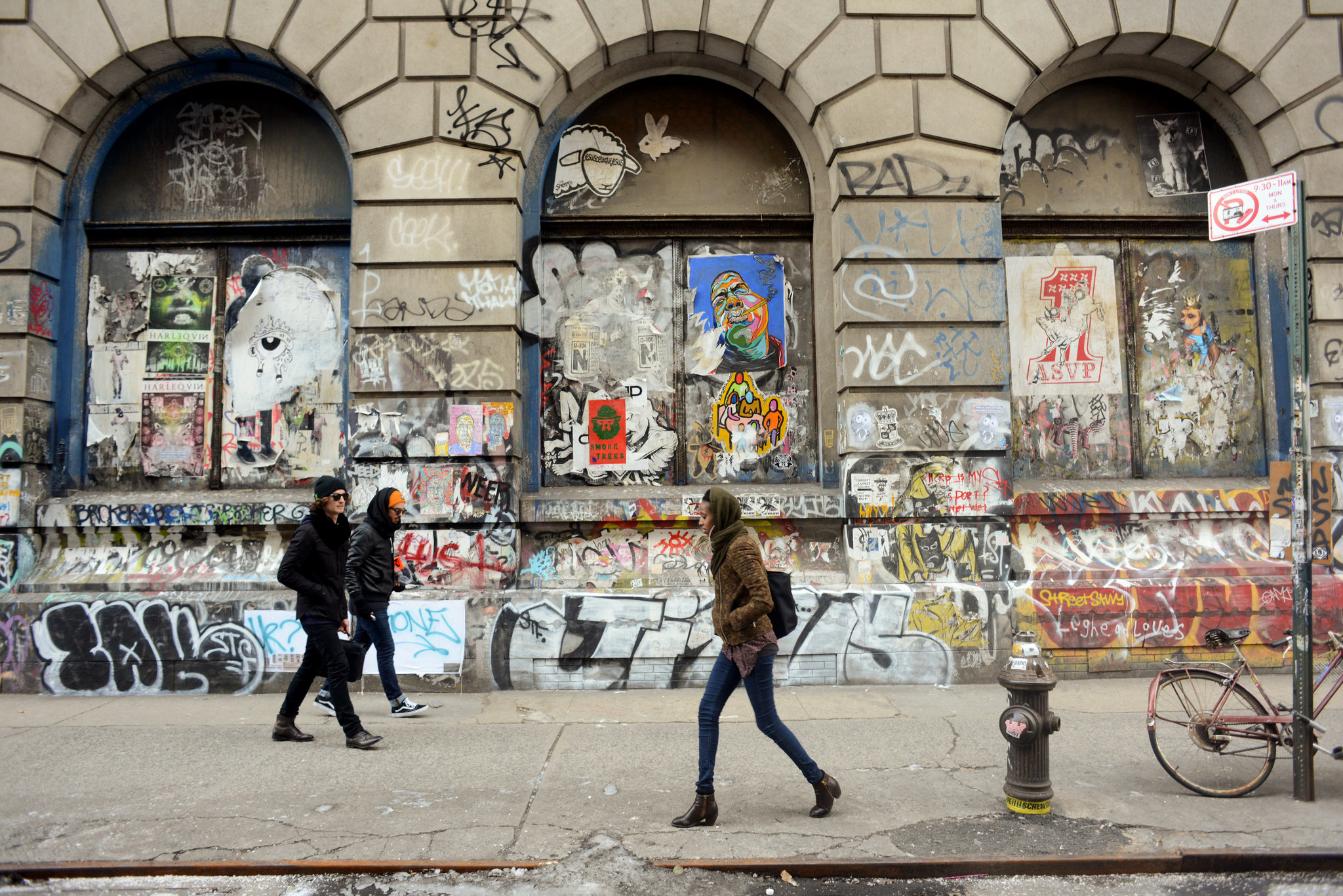This art installation by MTA Arts for Transit is one of our favorite reuses of an abandoned station. Closed in 1956, Myrtle Ave subway station used to run on the Brooklyn-Manhattan Transit line between Manhattan Bridge and DeKalb Avenue.
The DeKalb Ave section ran into a lot of problems as it was the chokepoint for the entire BMT Broadway subway operation, “with a lot of merges and some routings crossing others at grade in the switches on both sides of the station,” writes Joseph Brennan. The entire area was rebuilt in 1956, and this caused Myrtle Ave to lose its southbound platform. The northbound platform still exists, but has been closed ever since. An artwork called Masstransiscope by Bill Brand is located in the abandoned Myrtle Ave station. Installed in 1980, the piece works like a giant zoetrope. The piece was restored in 2008 and 2013.
 The zoetrope is a method that consists of a cylinder with slits cut vertically in the sides, on the inner surface of the cylinder is a band with images from a set of sequenced pictures. As the cylinder spins, the user looks through the slits at the pictures across. The scanning of the slits keeps the pictures from simply blurring together, and the user sees a rapid succession of images, producing the illusion of motion. From the late 19th century, devices working on similar principles have been developed, named analogously as linear zoetropes and 3D zoetropes, with traditional zoetropes now referred to as “cylindrical zoetropes.”
The zoetrope is a method that consists of a cylinder with slits cut vertically in the sides, on the inner surface of the cylinder is a band with images from a set of sequenced pictures. As the cylinder spins, the user looks through the slits at the pictures across. The scanning of the slits keeps the pictures from simply blurring together, and the user sees a rapid succession of images, producing the illusion of motion. From the late 19th century, devices working on similar principles have been developed, named analogously as linear zoetropes and 3D zoetropes, with traditional zoetropes now referred to as “cylindrical zoetropes.”
The zoetrope works on the same principle as its predecessor, the phenakistoscope, but is more convenient and allows the animation to be viewed by several people at the same time. Instead of being radially arrayed on a disc, the sequence of pictures depicting phases of motion is on a paper strip. For viewing, this is placed against the inner surface of the lower part of an open-topped metal drum, the upper part of which is provided with a vertical viewing slit across from each picture. The drum, on a spindle base, is spun. The faster the drum is spun, the smoother the animation appears.
As seen in the video above, when the train moves, riders see an animated cartoon, made from 228 hand-painted images. According to Brand’s website, the work “consists of a series of 30” high images housed inside a long wood and steel structure with narrow slits, through which the images are seen.” The artwork is painted on a 300 feet of reflected material and the inside is illuminated by fluorescent lights. The piece was restored in 2008 and after another restoration a few years ago. Till this day you can still see unexpected New Yorkers light up (or smirk at least, a New Yorker smile.)


